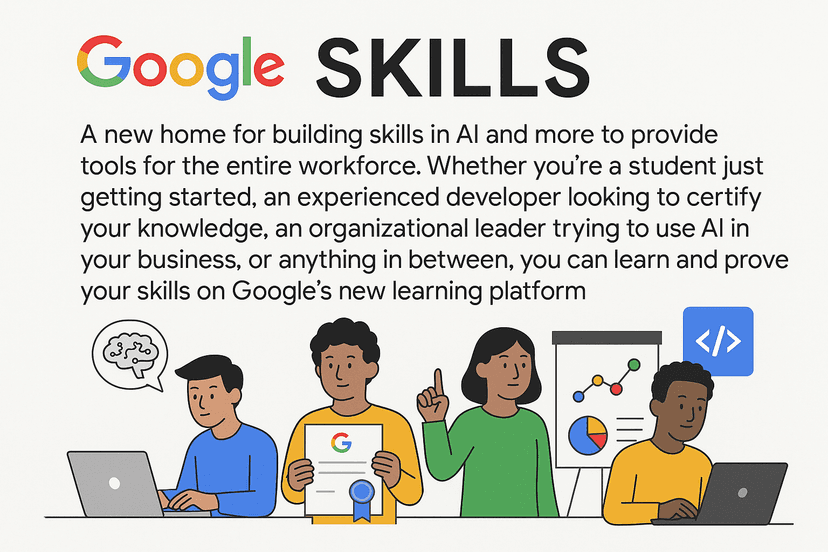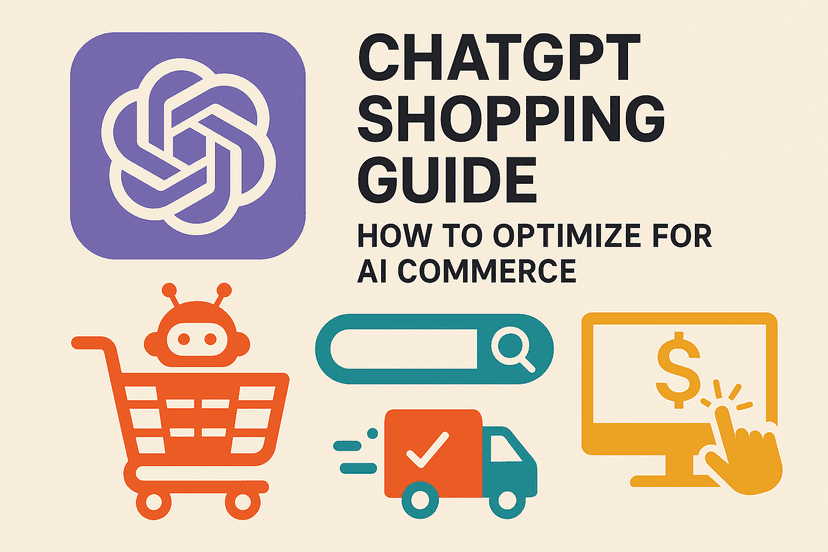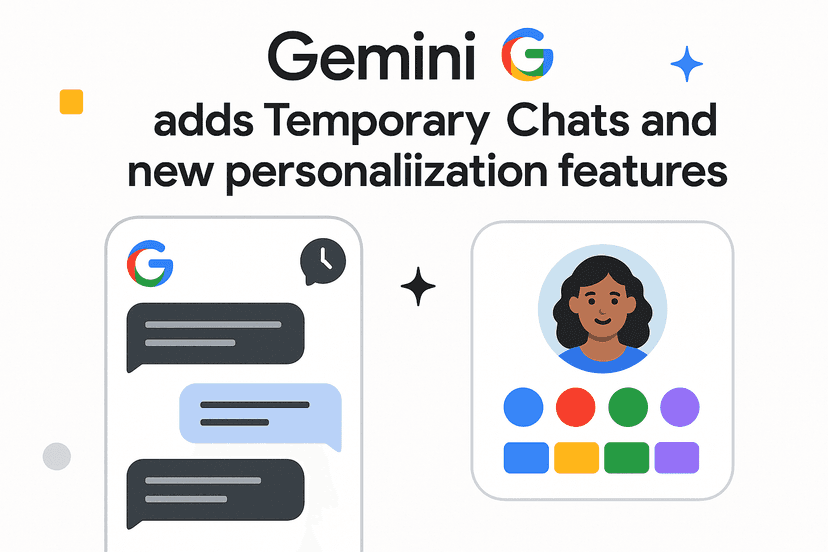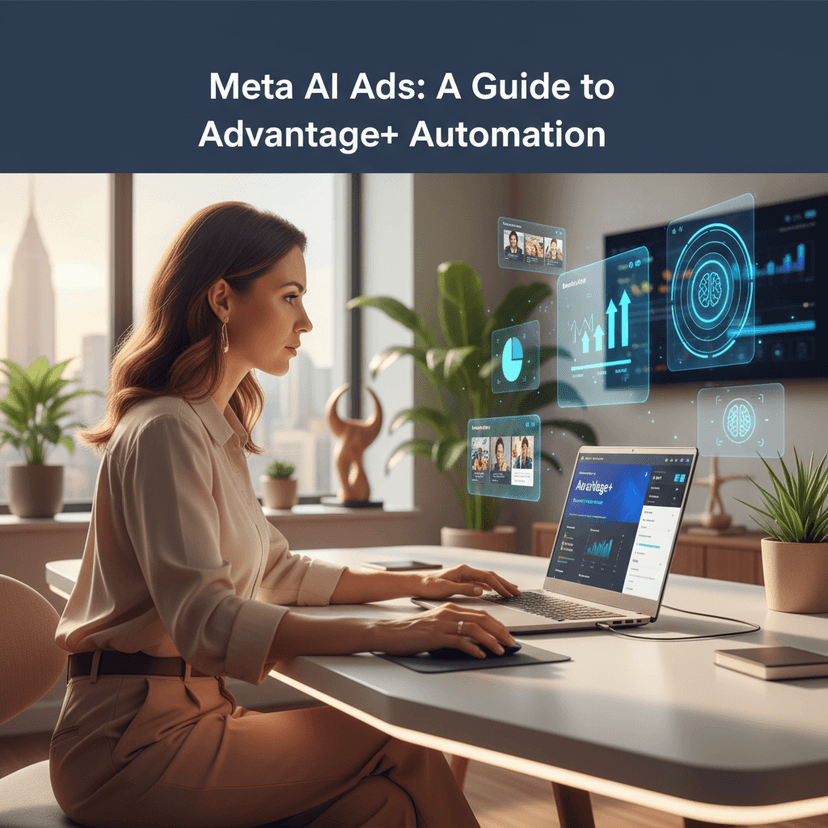Introduction
Artificial intelligence has undergone a remarkable evolution over the past decade. From simple rule-based systems to sophisticated machine learning algorithms, AI continues to transform how we live and work. However, a new paradigm is emerging that promises to revolutionize AI’s capabilities and applications: Agentic AI.
Agentic AI represents the next frontier in artificial intelligence, moving beyond passive response systems to autonomous, goal-oriented agents capable of independent reasoning and action. Unlike traditional AI systems that simply react to prompts or execute predefined tasks, agentic AI can perceive its environment, make decisions, plan sequences of actions, and learn from experiences—all while working toward specific objectives.
The implications of this shift are profound. Agentic AI isn’t just about automation; it’s about creating digital entities that can operate with unprecedented levels of autonomy and effectiveness across various domains. From customer service to healthcare, from software development to supply chain management, agentic AI is poised to transform how businesses operate and how we interact with technology.
In this comprehensive guide, we’ll explore what agentic AI is, how it works, its real-world applications, and the benefits and challenges it presents. Whether you’re a business leader, technology professional, or simply curious about the future of AI, understanding agentic AI will provide valuable insights into one of the most significant technological developments of our time.
What is Agentic AI?
Agentic AI refers to artificial intelligence systems designed to act autonomously on behalf of users or organizations to accomplish specific goals. Unlike conventional AI, which typically focuses on pattern recognition or prediction, agentic AI emphasizes agency—the capacity to take independent actions in an environment to achieve desired outcomes.
At its core, agentic AI embodies a shift from reactive to proactive AI systems. Traditional AI might analyze data or respond to queries, but agentic AI goes further by planning and executing complex sequences of actions, adapting to changing circumstances, and learning from feedback to improve performance over time.
Key characteristics that define agentic AI include:
Autonomy: Agentic AI can operate independently, making decisions and taking actions without continuous human supervision or intervention.
Goal-orientation: These systems work toward specific objectives, prioritizing actions that advance progress toward those goals.
Reasoning ability: Agentic AI employs sophisticated reasoning processes to understand problems, develop solutions, and evaluate potential outcomes.
Adaptability: These systems can adjust their strategies when encountering new situations or obstacles, finding alternative paths to achieve their goals.
Continuous learning: Agentic AI improves over time through experience, incorporating feedback to refine its approaches and enhance performance.
Interactivity: These systems can interact with various tools, data sources, and APIs to accomplish tasks that span multiple systems or domains.
Harvard Business Review describes agentic AI as AI-powered agents that can handle complex tasks like planning trips and making all travel arrangements, serving as virtual caregivers for the elderly, or optimizing supply chains in real-time based on fluctuating demand. This represents a dramatic leap forward in how humans interact and collaborate with AI.
While conventional AI might excel at specific tasks like generating content or classifying data, agentic AI integrates multiple capabilities to handle end-to-end processes that previously required significant human involvement. This shift promises to enhance productivity, streamline operations, and enable new possibilities across industries.
How Agentic AI Works
Agentic AI operates through a sophisticated four-step process that enables it to handle complex tasks autonomously. Understanding this process provides insight into how these systems differ from traditional AI applications.
The Four-Step Process
1. Perception
The first step in the agentic AI process is perception—gathering and processing relevant data from various sources. These might include:
- Databases and knowledge bases
- Digital interfaces and applications
- Sensors and IoT devices
- User inputs and queries
- External APIs and web services
During this phase, the AI extracts meaningful information, recognizes relevant entities or objects, and builds an understanding of the current state of its environment. This comprehensive data gathering enables the agent to work with a complete picture of the situation.
2. Reasoning
At the heart of agentic AI is the reasoning engine, typically powered by a large language model (LLM) that acts as the orchestrator. This component:
- Understands tasks and objectives
- Analyzes the perceived information
- Generates potential solutions or action plans
- Coordinates specialized models for specific functions
- Evaluates different approaches based on their likelihood of success
The reasoning phase often employs retrieval-augmented generation (RAG) techniques to access proprietary data sources, ensuring outputs are accurate, relevant, and grounded in reliable information. This is where agentic AI demonstrates its problem-solving capabilities, breaking complex goals into manageable steps.
3. Action
Once a plan is formulated, agentic AI moves to execution. During this phase, the system:
- Integrates with external tools and software through APIs
- Executes specific tasks based on the developed plan
- Monitors progress and outcomes in real-time
- Implements built-in guardrails to ensure actions are appropriate and safe
These guardrails are crucial for responsible deployment. For example, a customer service AI agent might be authorized to process claims up to a certain amount while requiring human approval for larger transactions. This ensures the AI operates within appropriate boundaries while maintaining its autonomy for routine tasks.
4. Learning
The final step in the process is continuous improvement through learning. Agentic AI:
- Creates a feedback loop or “data flywheel”
- Captures data from its interactions and outcomes
- Analyzes successes and failures
- Refines its models and approaches based on experience
This adaptive capability enables agentic AI to become increasingly effective over time, developing a more nuanced understanding of tasks and improving its ability to achieve desired outcomes efficiently.
The Role of Enterprise Data
A critical aspect of successful agentic AI implementation is the effective use of enterprise data. These systems require access to diverse data sources through accelerated AI query engines that process, store, and retrieve information efficiently.
Retrieval-augmented generation (RAG) plays a vital role here, allowing the AI to intelligently access the right information from broader data repositories. As the system operates, it generates new data through its interactions, which feeds back into the learning process, creating a virtuous cycle of improvement.
Platforms like NVIDIA’s AI infrastructure, including NVIDIA NeMo microservices for developing custom generative AI applications, provide the essential foundation for managing and accessing data efficiently—a crucial requirement for building responsive and effective agentic AI applications.
Agentic AI vs Traditional AI
To fully appreciate the significance of agentic AI, it’s important to understand how it differs from traditional AI approaches, including both conventional AI systems and more recent generative AI models.
Agentic AI vs Conventional AI
Decision-making Autonomy
Conventional AI: Typically follows pre-programmed rules or patterns, making decisions within narrow parameters defined by developers. These systems excel at specific tasks but lack true decision-making autonomy.
Agentic AI: Possesses the ability to make independent decisions based on objectives, available information, and learned experiences. It can evaluate multiple options and select the most appropriate course of action without explicit programming for every scenario.
Problem-solving Approach
Conventional AI: Usually applies fixed algorithms to solve problems in a consistent, predictable manner. These approaches work well for structured problems but struggle with novel situations.
Agentic AI: Employs dynamic problem-solving techniques, breaking down complex goals into manageable steps and adapting strategies as circumstances change. This enables handling of unstructured, multi-faceted challenges.
Learning Capacity
Conventional AI: Often requires manual updates or retraining to incorporate new knowledge or capabilities. Improvements typically happen through human intervention rather than autonomous learning.
Agentic AI: Continuously learns from interactions and outcomes, refining its approaches over time without explicit reprogramming. This creates a system that grows increasingly capable through experience.
Integration Capabilities
Conventional AI: Generally operates within predefined boundaries, with limited ability to interact with external systems or tools unless specifically configured to do so.
Agentic AI: Seamlessly integrates with various tools, data sources, and APIs, enabling it to leverage multiple systems to accomplish complex tasks that span different domains or applications.
Agentic AI vs Generative AI
While generative AI has received significant attention for its ability to create human-like content, agentic AI represents a different paradigm:
Purpose and Function
Generative AI: Primarily focused on creating content—text, images, code, etc.—based on patterns learned from training data. It excels at producing outputs that mimic human creativity.
Agentic AI: Designed to accomplish goals through strategic planning and action. Rather than simply generating content, it uses intelligence to solve problems and achieve objectives.
Interaction Model
Generative AI: Typically operates in a request-response pattern, where users prompt the AI and receive generated content in return. The interaction is largely passive on the AI’s part.
Agentic AI: Engages in ongoing, iterative interactions with both users and systems. It can initiate actions, request clarification, and maintain context across multiple exchanges to work toward defined goals.
Execution Capability
Generative AI: Generally lacks the ability to execute actions beyond content generation. It produces outputs but doesn’t independently implement them in real-world systems.
Agentic AI: Can directly execute tasks by integrating with other software, databases, or digital tools. This enables it to move beyond suggestions to actually implementing solutions.
Contextual Understanding
Generative AI: Often works with the immediate context provided in a prompt, with limited ability to maintain broader awareness of ongoing objectives or previous interactions.
Agentic AI: Maintains extended context about goals, constraints, user preferences, and past interactions, enabling more coherent and purposeful behavior over time.
As these comparisons illustrate, agentic AI represents a significant advancement in artificial intelligence, combining the pattern recognition capabilities of conventional AI with the creative potential of generative AI, while adding crucial elements of autonomy, planning, and execution that enable it to serve as a truly effective digital agent.
Key Components of Agentic AI
Agentic AI systems are composed of several critical components that work together to enable autonomous, goal-driven behavior. Understanding these components provides insight into how these sophisticated systems function and what makes them distinct from other AI approaches.
Large Language Models as the Foundation
At the core of most agentic AI systems is a large language model (LLM) that serves as the central reasoning engine. These models provide several essential capabilities:
Natural Language Understanding: LLMs can interpret human instructions, questions, and feedback with remarkable accuracy, enabling intuitive communication between humans and AI agents.
Reasoning and Planning: Modern LLMs demonstrate emergent reasoning abilities that allow them to break down complex problems, identify necessary steps, and develop coherent plans of action.
Knowledge Integration: These models can incorporate vast amounts of knowledge, both from their training data and from additional sources provided through techniques like retrieval-augmented generation.
Task Orchestration: LLMs can coordinate the activities of other specialized models or tools, determining when and how to utilize different capabilities to achieve an overall objective.
While earlier LLMs were primarily used for generating text, their integration into agentic systems transforms them into powerful reasoning engines that can guide autonomous behavior across diverse domains.
Memory Systems
Effective agentic AI requires sophisticated memory capabilities that extend beyond the context windows of traditional LLMs:
Short-term Memory: Enables the agent to maintain awareness of the current conversation, task status, and immediate context.
Long-term Memory: Allows the agent to store and retrieve information about past interactions, user preferences, and learned insights that remain relevant over extended periods.
Episodic Memory: Records specific interactions or experiences that might inform future decisions, creating a history the agent can reference when encountering similar situations.
Vectorized Knowledge Bases: Structured repositories of information that the agent can query to supplement its built-in knowledge when addressing specific topics or domains.
These memory systems enable agentic AI to maintain coherence across interactions, learn from experience, and build increasingly accurate models of user needs and preferences over time.
Tool Integration Frameworks
A distinguishing feature of agentic AI is its ability to interact with external tools and systems to accomplish tasks. This requires robust integration frameworks:
API Connectors: Enable the agent to communicate with various software systems, databases, and web services to access information or trigger actions.
Function Calling: Allows the agent to invoke specific functions or operations within connected systems, passing appropriate parameters based on user needs and contextual understanding.
Tool Selection Logic: Sophisticated decision-making processes that help the agent determine which tools are appropriate for different aspects of a task.
Error Handling and Recovery: Mechanisms to detect when tool interactions fail and develop alternative approaches to accomplish goals despite setbacks.
Through these integration capabilities, agentic AI can transcend the role of advisor to become an active participant in digital workflows, directly implementing solutions rather than merely suggesting them.
Planning and Execution Modules
To achieve goals autonomously, agentic AI requires dedicated components for planning and execution:
Goal Decomposition: Systems that break down complex objectives into manageable sub-goals and individual tasks that can be addressed sequentially or in parallel.
Action Planning: Algorithms that determine the optimal sequence of actions to achieve desired outcomes, considering dependencies, constraints, and resource availability.
Progress Monitoring: Mechanisms to track the status of ongoing tasks, evaluate success or failure, and determine when goals have been achieved.
Adaptive Replanning: Capabilities to revise plans when circumstances change or initial approaches prove ineffective, ensuring resilience in dynamic environments.
These planning and execution modules transform passive AI systems into active agents capable of sustained, purposeful activity toward defined objectives.
Learning and Feedback Systems
The ability to improve over time is central to agentic AI’s value proposition, requiring sophisticated learning mechanisms:
Reinforcement Learning Components: Enable the agent to learn from the outcomes of its actions, strengthening successful approaches and modifying or abandoning ineffective ones.
User Feedback Integration: Systems to collect, interpret, and apply explicit and implicit feedback from users about the agent’s performance and outputs.
Behavioral Analytics: Tools to analyze patterns in the agent’s operations, identifying opportunities for optimization or areas where performance consistently falls short.
Model Updating Mechanisms: Processes to incorporate new knowledge, capabilities, or improvements into the agent’s underlying models without disrupting existing functionality.
Through these learning systems, agentic AI becomes increasingly valuable over time, adapting to specific user needs and growing more efficient at accomplishing common tasks.
Together, these components create AI systems that can perceive their environment, reason about complex problems, take meaningful actions toward goals, and continuously improve through experience—the hallmarks of true agentic intelligence.
Real-World Applications of Agentic AI
Agentic AI is already transforming operations across multiple industries, with implementations that range from enhancing existing processes to enabling entirely new capabilities. These practical applications demonstrate the versatility and power of autonomous, goal-oriented AI systems.
Customer Service
The customer service sector is experiencing significant transformation through agentic AI, with systems that go far beyond traditional chatbots:
Comprehensive Issue Resolution: Unlike simple Q&A bots, agentic AI can handle complete customer service workflows. For example, when a customer inquires about an overdue payment, the AI can check account balances, recommend payment options from various accounts, wait for the customer’s decision, and then complete the transaction accordingly.
Personalized Support: These systems can access customer histories, preferences, and behavior patterns to provide tailored assistance that acknowledges the unique context of each interaction.
Proactive Problem Solving: Rather than merely responding to inquiries, agentic customer service AI can anticipate potential issues and offer solutions before customers experience problems.
According to industry data, over half of service professionals report significant improvements in customer interactions after implementing agentic AI, with reduced response times and increased satisfaction rates.
Software Development and Engineering
Software engineering is benefiting from agentic AI that augments developer capabilities:
Automated Code Generation: AI agents can write substantial portions of code based on functional requirements, freeing developers to focus on more creative or complex aspects of programming.
Intelligent Testing and Debugging: These systems can autonomously identify potential bugs, generate test cases, and even propose fixes for common coding issues.
Development Workflow Optimization: Agentic AI can manage project backlogs, prioritize tasks, and coordinate team activities to improve development efficiency.
Projections suggest that by 2030, AI could automate up to 30% of software development work hours, dramatically increasing productivity while allowing developers to focus on innovation rather than routine coding tasks.
Healthcare
In healthcare, agentic AI is improving both clinical outcomes and operational efficiency:
Clinical Decision Support: Physicians can leverage AI agents to analyze vast amounts of medical literature, patient data, and treatment outcomes to inform diagnosis and treatment decisions.
Administrative Automation: AI systems reduce the documentation burden on healthcare providers by capturing clinical notes, managing schedules, and handling insurance verification.
Patient Engagement: Agentic AI provides 24/7 support for patients, offering medication reminders, answering questions about treatment plans, and monitoring adherence to care regimens.
These applications help address critical challenges in healthcare, including provider burnout, administrative costs, and patient compliance with treatment plans.
Content Creation and Marketing
Marketing departments are deploying agentic AI to streamline content production and enhance campaign performance:
Multichannel Content Generation: AI agents can create cohesive content packages across formats—blog posts, social media updates, email campaigns, and more—while maintaining consistent messaging and brand voice.
Performance Analytics and Optimization: These systems continuously monitor campaign performance, identifying underperforming content and automatically implementing improvements.
Personalization at Scale: Agentic AI enables truly individualized marketing by generating content tailored to specific audience segments or even individual customers.
Research indicates that marketers using generative AI agents save an average of three hours per content piece, allowing them to focus on strategic initiatives rather than production details.
Supply Chain and Inventory Management
Agentic AI is revolutionizing how businesses manage complex supply chains:
Demand Forecasting and Inventory Optimization: AI systems analyze historical data, market trends, and external factors to predict demand fluctuations and automatically adjust inventory levels.
Supplier Management: These agents can monitor supplier performance, identify potential disruptions, and recommend alternative sourcing strategies when problems arise.
Logistics Coordination: Agentic AI optimizes routing, scheduling, and transportation mode selection to reduce costs and improve delivery reliability.
By integrating data across the entire supply chain ecosystem, these systems provide unprecedented visibility and control, helping organizations respond rapidly to changing market conditions.
Video Analytics
Both enterprises and public sector organizations are implementing video analytics AI agents to enhance operations:
Visual Information Processing: These systems analyze footage from cameras, IoT sensors, and vehicles to extract actionable insights through natural language interfaces.
Complex Video Operations: Agents can perform sophisticated tasks like video search, summarization, and visual question-answering without human intervention.
Automated Monitoring: AI continuously scans video feeds to detect anomalies, generate incident reports, and support quality control through visual inspection.
These capabilities enable organizations to derive maximum value from the growing volume of visual data they collect, supporting applications from security to maintenance to customer experience enhancement.
Financial Services
In the financial sector, agentic AI is automating complex processes and providing personalized guidance:
Investment Management: AI agents can analyze market data, assess risk profiles, and autonomously manage investment portfolios, making buy/sell decisions and rebalancing assets according to predefined strategies.
Fraud Detection and Prevention: These systems monitor transaction patterns in real-time, identifying suspicious activities and implementing protective measures before fraud occurs.
Financial Planning: Agentic AI provides personalized financial advice, helping individuals optimize savings, investments, and retirement planning based on their specific circumstances and goals.
By democratizing access to sophisticated financial services, these applications make personalized wealth management available to broader segments of the population.
These diverse applications illustrate how agentic AI is moving beyond theoretical potential to deliver practical value across industries. As these systems continue to evolve, we can expect even more innovative use cases that leverage their unique combination of autonomy, reasoning, and execution capabilities.
Benefits of Agentic AI
The adoption of agentic AI offers organizations and individuals numerous advantages that extend beyond the capabilities of traditional automation or AI systems. These benefits highlight why agentic AI represents a significant advancement in how we leverage artificial intelligence.
Enhanced Productivity and Efficiency
Agentic AI dramatically improves productivity by automating not just individual tasks but entire workflows:
End-to-End Process Automation: Unlike conventional automation that handles discrete tasks, agentic AI can manage complete processes from initiation to completion, eliminating handoffs and reducing cycle times.
Intelligent Resource Allocation: These systems optimize the use of both digital and physical resources, ensuring they’re deployed where they can create maximum value.
Continuous Operation: Agentic AI can work 24/7 without breaks, fatigue, or performance degradation, maintaining consistent productivity levels regardless of time or day.
Organizations implementing agentic AI typically report efficiency improvements of 25-40% in targeted processes, with corresponding reductions in operational costs.
Improved Decision-Making
The sophisticated reasoning capabilities of agentic AI enhance decision quality across organizational levels:
Data-Driven Insights: These systems can analyze vast amounts of structured and unstructured data to identify patterns, trends, and correlations that might escape human attention.
Reduced Cognitive Bias: Agentic AI applies consistent decision frameworks, reducing the impact of human cognitive biases that often distort judgment.
Scenario Evaluation: These agents can rapidly assess multiple potential courses of action, simulating outcomes to identify optimal approaches to complex problems.
By augmenting human decision-making with AI-powered analysis and recommendations, organizations can make more informed choices with greater consistency and confidence.
Personalization at Scale
Agentic AI enables truly personalized experiences that adapt to individual needs and preferences:
Contextual Understanding: These systems build comprehensive user profiles based on interactions, preferences, and behaviors, creating a nuanced understanding of individual needs.
Dynamic Adaptation: Unlike static personalization that relies on predefined rules, agentic AI continuously refines its approach based on feedback and changing circumstances.
Anticipatory Service: Advanced agents can predict user needs before they’re explicitly expressed, proactively offering relevant information or assistance.
This level of personalization was previously impossible at scale, requiring prohibitively expensive one-to-one human service models that limited availability to premium customer segments.
Reduced Operational Costs
The economic benefits of agentic AI extend beyond productivity improvements:
Labor Cost Optimization: By automating complex processes previously requiring skilled human intervention, organizations can redeploy talent to higher-value activities while reducing overall labor costs.
Error Reduction: Agentic AI minimizes costly mistakes in areas like data entry, compliance monitoring, and transaction processing, avoiding the expenses associated with error correction and remediation.
Resource Efficiency: These systems optimize the use of physical resources like energy, materials, and equipment, reducing waste and associated costs.
Case studies consistently show positive ROI for agentic AI implementations, with payback periods typically ranging from six to eighteen months depending on application complexity and scale.
Enhanced Human Capabilities
Rather than replacing humans, effective agentic AI implementations enhance human capabilities:
Cognitive Augmentation: These systems handle information-intensive aspects of work, allowing humans to focus on creative thinking, emotional intelligence, and complex problem-solving.
Skill Amplification: Agentic AI can extend the reach of specialized expertise, enabling professionals to serve more clients or patients with consistent quality.
Reduced Cognitive Load: By managing routine aspects of complex processes, these systems reduce mental fatigue and cognitive overload among knowledge workers.
This human-AI partnership model creates value that neither could achieve independently, combining the creativity and judgment of humans with the processing power and consistency of AI.
Adaptability and Resilience
Agentic AI enhances organizational adaptability in rapidly changing environments:
Dynamic Response to Change: These systems can quickly adjust to changing conditions, market shifts, or new requirements without extensive reprogramming.
Continuous Improvement: Through ongoing learning, agentic AI becomes increasingly effective over time, adapting to evolving needs and incorporating new capabilities.
Operational Resilience: By distributing knowledge and capabilities across digital systems, organizations become less vulnerable to workforce disruptions or knowledge loss.
In today’s volatile business environment, this adaptability represents a significant competitive advantage, enabling organizations to pivot quickly in response to market changes or unexpected disruptions.
Democratized Access to Expertise
Agentic AI makes specialized expertise more widely available:
Knowledge Accessibility: These systems can encapsulate specialized knowledge in forms accessible to non-experts, extending the reach of expertise beyond traditional boundaries.
Service Availability: By reducing the cost of delivering expert services, agentic AI makes them available to previously underserved populations or market segments.
Capability Equalization: Small organizations can leverage AI to offer capabilities previously available only to larger competitors with more extensive resources.
This democratization effect is particularly significant in fields like healthcare, education, and financial services, where access to expertise has traditionally been limited by geography, economics, or social factors.
Together, these benefits explain why organizations across industries are investing in agentic AI despite implementation challenges. The combination of enhanced productivity, improved decision-making, personalization capabilities, cost savings, and increased adaptability creates compelling value propositions that are difficult to achieve through other technological approaches.
Challenges and Limitations
While agentic AI offers significant benefits, organizations must also navigate several challenges and limitations when implementing these systems. Understanding these potential obstacles is crucial for developing realistic expectations and effective mitigation strategies.
Technical Challenges
Implementing agentic AI involves overcoming several technical hurdles:
Integration Complexity: Connecting AI agents with existing enterprise systems often requires extensive custom development, especially in organizations with legacy infrastructure or siloed data environments.
Data Quality and Accessibility: Agentic AI requires access to high-quality, relevant data to function effectively. Many organizations struggle with data fragmentation, inconsistency, or inadequate metadata that limits AI performance.
Computational Resources: The sophisticated models underlying agentic AI demand significant computational resources, potentially requiring substantial infrastructure investments.
Performance Limitations: Current systems may experience limitations in handling extremely complex or novel situations that fall outside their training or experience, leading to suboptimal performance in edge cases.
Organizations can address these challenges through phased implementation approaches, strategic data governance initiatives, and hybrid deployment models that balance on-premises and cloud resources.
Ethical and Governance Concerns
Agentic AI raises important ethical questions that require thoughtful consideration:
Transparency and Explainability: The complex reasoning of advanced AI systems can be difficult to interpret, creating challenges for accountability and trust.
Bias and Fairness: AI agents may perpetuate or amplify biases present in training data or design assumptions, potentially leading to unfair outcomes for certain groups.
Privacy Implications: The extensive data access required by agentic AI raises concerns about user privacy and the potential for misuse of sensitive information.
Accountability for Decisions: Determining responsibility when AI systems make consequential decisions remains challenging, particularly in regulated industries or high-risk applications.
Addressing these concerns requires robust governance frameworks, regular bias audits, transparent documentation of AI capabilities and limitations, and appropriate human oversight mechanisms.
Organizational Adoption Barriers
Beyond technical considerations, organizations face adoption challenges:
Workforce Concerns: Employees may resist agentic AI implementation due to fears about job displacement or changes to established work processes.
Skill Gaps: Many organizations lack the specialized talent needed to develop, deploy, and maintain sophisticated AI systems effectively.
Unclear ROI Expectations: The novelty of agentic AI makes it difficult to accurately predict implementation costs and financial returns, potentially complicating investment decisions.
Change Management Challenges: Integrating AI agents into existing workflows requires careful change management to ensure user acceptance and effective utilization.
Successful organizations address these challenges through comprehensive change management strategies, skills development programs, realistic ROI modeling, and clear communication about how AI will augment rather than replace human capabilities.
Reliability and Trust Issues
Building trust in agentic AI remains an ongoing challenge:
Unpredictable Failures: AI agents may occasionally produce unexpected or incorrect outputs, particularly in unusual situations or when faced with adversarial inputs.
Alignment with Human Intent: Ensuring AI systems accurately understand and faithfully execute human intentions can be difficult, especially with complex or ambiguous instructions.
Over-reliance Risks: Users may develop excessive trust in AI capabilities, potentially leading to inadequate supervision or verification of critical outputs.
Security Vulnerabilities: As AI systems gain greater autonomy and access to sensitive systems, they become potential vectors for security breaches or manipulation.
Organizations can mitigate these concerns through robust testing regimes, appropriate human oversight models, clear communication about AI limitations, and comprehensive security frameworks.
Regulatory and Compliance Challenges
The evolving regulatory landscape presents additional complications:
Uncertain Regulatory Requirements: Regulations governing AI usage are still developing in many jurisdictions, creating compliance uncertainty for early adopters.
Sector-Specific Constraints: Industries like healthcare, finance, and government face additional regulatory considerations that may limit certain applications of agentic AI.
Cross-Border Complexity: Organizations operating globally must navigate varying regional approaches to AI governance, potentially requiring different implementations for different markets.
Liability Questions: The autonomous nature of agentic AI raises complex liability questions when systems make errors or cause harm.
Forward-thinking organizations address these challenges by monitoring regulatory developments, engaging with policymakers, building compliance considerations into design processes, and developing appropriate risk management frameworks.
Limitations of Current Technology
Despite rapid advancement, current agentic AI technology has inherent limitations:
Contextual Understanding Gaps: Today’s systems may struggle with nuanced cultural contexts, subtle emotional cues, or implicit knowledge that humans navigate effortlessly.
Creative Problem-Solving Constraints: While AI excels at optimization within defined parameters, it may underperform in situations requiring true creativity or radical innovation.
Ethical Reasoning Deficiencies: Current AI lacks sophisticated moral reasoning capabilities, potentially leading to ethically problematic recommendations in complex situations.
Common Sense Limitations: AI systems sometimes lack the common sense understanding that humans develop through lived experience, leading to occasionally bizarre or impractical suggestions.
Recognizing these limitations helps organizations deploy agentic AI appropriately, maintaining human oversight in areas where current technology may fall short.
By acknowledging and addressing these challenges proactively, organizations can maximize the benefits of agentic AI while minimizing potential pitfalls. The most successful implementations typically involve thoughtful consideration of both technological capabilities and human factors, creating systems that effectively complement human strengths rather than attempting to replace them entirely.
The Future of Agentic AI
As agentic AI continues to evolve, several emerging trends and developments point to its future trajectory and potential impact across industries and society. Understanding these trends can help organizations prepare for the opportunities and challenges that lie ahead.
Technological Evolution
The technical capabilities of agentic AI are advancing rapidly, with several key developments on the horizon:
Multi-modal Intelligence: Future agentic AI will seamlessly integrate understanding across text, images, audio, video, and other data types, enabling more comprehensive perception and interaction capabilities.
Enhanced Reasoning Abilities: Ongoing research in areas like chain-of-thought reasoning, causal inference, and symbolic AI integration promises to significantly improve agents’ problem-solving capabilities, especially for complex, multi-step tasks.
Collaborative Agent Networks: Rather than operating in isolation, future systems will likely feature networks of specialized agents that collaborate to solve problems, combining different expertise and capabilities.
Embodied AI: The integration of agentic AI with robotics and IoT devices will create systems that can perceive and act in the physical world, dramatically expanding potential applications.
Neuromorphic Computing: New computing architectures inspired by the human brain may enable more efficient and capable AI systems that require less power and training data.
These technological advances will continuously expand the range of tasks that agentic AI can perform effectively, pushing the boundaries of automation into increasingly complex domains.
Market Growth and Industry Transformation
Economic projections suggest explosive growth in the agentic AI market:
Market Expansion: According to Gartner, by 2028, 33% of enterprise software applications will include agentic AI capabilities, up from less than 1% in 2024, representing a massive market shift.
Investment Acceleration: Venture capital and corporate investment in agentic AI startups is increasing rapidly, with funding expected to exceed $30 billion annually by 2026.
Industry Disruption: Traditional service models across industries like legal, accounting, consulting, and healthcare will face significant disruption as AI agents take on increasingly sophisticated advisory and execution roles.
New Business Models: The proliferation of agentic AI will enable novel business models centered around AI-as-a-service offerings, outcome-based pricing, and hybrid human-AI service delivery.
Organizations that anticipate these market shifts can position themselves advantageously, either as providers of agentic AI solutions or as early adopters gaining competitive advantage through implementation.
Evolving Human-AI Collaboration
The relationship between humans and AI will continue to develop in sophisticated ways:
Cognitive Partnerships: Rather than simple delegation, we’ll see the emergence of true human-AI partnerships where each party contributes complementary strengths to solve complex problems.
Adaptive Interfaces: AI agents will become increasingly adept at adjusting their communication styles and interaction models to match individual user preferences and capabilities.
Trust Calibration: As users gain experience with AI systems, they’ll develop more nuanced understanding of when to rely on AI recommendations and when to exercise human judgment.
Skill Evolution: Human roles will evolve to emphasize uniquely human capabilities like emotional intelligence, ethical reasoning, creative thinking, and strategic oversight of AI systems.
These developments will reshape workplace dynamics and organizational structures, creating new career paths focused on effective human-AI collaboration and oversight.
Ethical and Regulatory Frameworks
As agentic AI becomes more powerful and pervasive, ethical and regulatory considerations will gain prominence:
Standardized Governance Frameworks: Industry-wide standards for AI transparency, explainability, and fairness will emerge, providing clearer guidelines for responsible development.
Adaptive Regulation: Regulatory approaches will likely evolve from rigid rules to more adaptive frameworks that can keep pace with technological developments while protecting core values.
Ethics by Design: Ethical considerations will increasingly be integrated into AI development processes from the earliest stages rather than addressed as afterthoughts.
International Coordination: Given the global nature of AI development and deployment, we’ll likely see greater international cooperation on establishing common principles and standards.
Organizations that proactively engage with these ethical and regulatory developments will be better positioned to build sustainable AI strategies aligned with societal expectations and legal requirements.
Emerging Applications
New use cases for agentic AI will continue to emerge across industries:
Personalized Education: AI agents will serve as lifelong learning companions, adapting educational content and approaches to individual learning styles, goals, and progress.
Environmental Management: Sophisticated AI systems will help optimize resource usage, reduce waste, and monitor environmental conditions to support sustainability initiatives.
Scientific Discovery: Agentic AI will accelerate research across disciplines by generating hypotheses, designing experiments, and analyzing results with minimal human intervention.
**Elder Care







